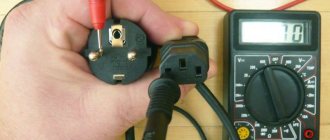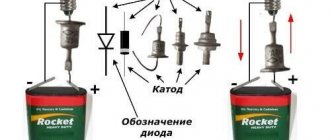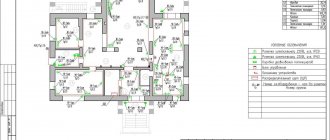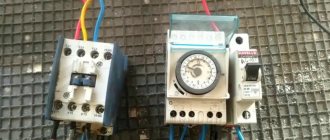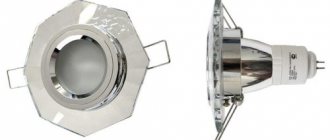Introduction
The main task of testing power transformers is constant monitoring of faults in all components of such equipment, their timely elimination after detection. All this is done with one goal - to continue the continuous operation of an important unit in the energy supply system for many energy consumers.
A series of tests allows us to assess how reliable, cost-effective, safe and technically sound a power generating unit is. To become more familiar with many electrical installation tests, detailed considerations of them using specific examples help. For example, a detailed description of the instructions on how to test a 250 kVA power transformer with a megger in this article is the most effective choice for such an acquaintance.
Why do you need to test transformers?
The power transformer is an important transmission unit as part of a powerful and complex power system that provides power to a significant number of industrial and household energy consumers. Such a unit must be reliable and serviceable for a long time, so that there is no failure in the useful work of industrial consumers, and there is no shortage of electricity consumption in the everyday life of ordinary people.
That is why oil and dry power voltage converters are constantly tested:
- At manufacturing plants, numerous inspections and performance tests are carried out - in order to guarantee that a complex technical device for converting voltage from one class to another after manufacturing is fully operational and ready for further work at the site;
- When installing a supply system in an ensemble, testing according to a special acceptance testing methodology - in order to understand that during the transportation and subsequent installation of power equipment, no defects or installation errors occurred or were created that would not be able to provide proper, stable power to the required number of consumers;
- Periodically during the operation of electrical installations and components, as a result of which certain failures or defects of complex transmission equipment may also occur - to prevent pre-emergency or emergency conditions. To identify defects at early stages and timely eliminate them in operational mode with minimal losses for all energy consumers.
Such monitoring and checks of the operation of power transmission devices ensure maximum quality of operation of power systems as a whole, which means that the maximum quantity and quality of electricity is obtained in industry and in the domestic sector, which has a beneficial effect on the level of their efficiency.
Methodology for acceptance testing of power transformers
Work on commissioning a new power plant, which includes one of the main power units - a power voltage transformer - must take into account a certain testing methodology for all its components and mechanisms. Acceptance tests of power transformers on new energy systems or at the time of scheduled preventive maintenance of already operating energy facilities include up to 20 types of various checks and control tests depending on the type of transformer according to voltage class, the difference in its cooling systems, and other complexity of other systems electricity supply
Also, it is important to understand the technical conditions for power transformers according to GOST.
To begin with, a review of the general provisions for testing power electrical equipment allows us to understand their details.
General provisions
Power transformers are subject to control checks and tests to identify possible defects when commissioning new equipment or determining the degree of reliability of operating electrical units according to a strict schedule of their frequency and following a certain amount of testing:
- A mandatory preliminary determination of the conditions for connecting the transformer without drying is carried out;
- The DC resistance of the transformer windings is measured;
- Resistance measurements are carried out, tests are carried out with increased voltage of industrial frequency insulation of windings, insulation of structural elements;
- Transformer oil is tested;
- Tank leak testing;
- The transformation ratio is checked, winding connection groups, all switching equipment and devices, cooling systems, safety systems in the form of numerous transformer valves are tested, and the suitability of exhaust pipes is assessed.
Types of checks
Based on the listed provisions for testing power power equipment, it becomes clear to an ordinary person unfamiliar with power supply how comprehensively such a power unit is checked for serviceability and performance. If transformers have high voltage conversion powers from 1000 kVA to tens of mVA, type tests are added to their testing:
- Measurements of the percentage of dielectric losses - for power equipment designed for voltages of 35 kilovolts;
- Measurements of current and no-load losses - for transformers with a power of 1000 kVA and above;
- Short circuit resistance measurements - for transformers with a power of 63 mVA and above.
When carrying out all of the above tests and tests, the working personnel must be guided by certain regulations, instructions and regulatory documentation for carrying out such work in accordance with safety regulations and environmental protection.
Normative references
General technical requirements for power converting devices of various voltage classes are determined by the following standards:
- “PUE” (“Rules for Electrical Installations”), 7th edition, chapter 1.8, paragraph 1.8.16, paragraphs 1-14;
- “PTEEP” (“Rules for the technical operation of consumer electrical installations”), Appendix 3 Section 2; Appendix 3.1, table 5;
- Transformer passport from the manufacturer;
- GOST 11677-75 - in the standard, which describes programs and acts of acceptance, standard and periodic tests of transforming electrical equipment carried out at manufacturing plants;
- GOST 3484-77 / GOST 22756-77 / GOST 8008-75 – standards that include and regulate the entire methodology for ongoing testing before and after installation of power systems at sites.
At the time of testing, it is worth additionally being guided by several more regulatory documents such as GOST 1516 / STP 09110.220.366-08, which help specialists determine the detailed scope of testing and verification work on power voltage transformers in accordance with safety and environmental protection requirements.
Measurement methods
Guided by the above documentation, the following methods of measuring components and mechanisms are carried out at the time of testing power transformers:
- Measuring the insulation resistance of transformer windings - this process is carried out using a megohmmeter with a rated operating voltage of 2500 volts. Before and between measurements, all transformer windings must be grounded;
- The dielectric loss tangent is measured using an AC bridge. If the tested transformers are oil-filled during this period, the measurement is carried out at a supply voltage lower than the nominal nominal voltage, equal to 2/3 of it;
- Measuring winding capacitance is referred to as electrical testing of a transformer, which allows one to obtain data on the degree of humidity of the transformer windings. This type of measurement is available when monitoring the transformer absorption coefficient, which is the ratio of the insulation resistance of the windings after a sixty-minute measurement to the resistance value after a fifteen-minute measurement;
- Measuring the resistance of windings to direct current is a method that allows you to check power transformers for hidden faults;
- The transformation ratio of power equipment is determined by the method of two voltmeters, which gives an understanding of the correct or incorrect connection of a group of transformer windings.
Additional tests
There are other periodic tests of the power transformer, which are in the nature of additional tests and checks of voltage transformation devices. These include:
- Checking phasing, inputs and built-in current transformers of power equipment;
- Switching on the device to the rated voltage with a push and others.
Both for basic measurement methods and for additional tests, there are special measuring instruments defined by regulations, conditions for their implementation, permissible error correction factors and a certain clear procedure. The article briefly and succinctly introduces all this below.
Measuring
Or the instruments used to carry out the acceptance testing procedure include the following standard set of electrical equipment:
- Electronic megohmmeter for a voltage limit of 2500 Volts (type F4102/2-M);
- Voltmeters (type E545);
- Ammeter (type E526);
- DC bridges;
- Laboratory testing facility or stand (type P333);
- Other instruments used in experiments depending on the type of techniques being performed.
At the time of testing, it is impossible to do without certain means of protection for the working personnel conducting tests and trials of dangerous electrical equipment in the form of:
- Portable grounding;
- Dielectric carpets, gloves, boots;
- Warning posters.
Only after ensuring complete safety and having carried out a full range of preparatory and organizational work should one begin the current processes of testing power voltage transformers.
Accuracy Requirements
The regulations for testing power transformers establish certain requirements for measurement errors, without taking into account which during testing it is possible to make a number of technical errors in further calculations of the values of test methods for electrical equipment, which in turn will lead to incorrect final conclusions about the degree of reliability of the transformer and its performance in further operation .
The error in all types of tests and measurement methods should not exceed more than 5% of the established nominal values.
Conditions
The methodology for testing and testing such a complex technical device involves the selection of certain climatic conditions for carrying out, preparatory, organizational and technical preliminary work. They include the following conditions:
- Any methods of measuring voltage transformer systems are carried out only in dry weather conditions;
- Before testing, the power unit itself must be pre-tired, all places of proposed measurements must be cleared of dust and have free access for the personnel being tested;
- All necessary testing instruments must contain current verification dates and be in full working order;
- Tests for measuring the resistance of windings to direct current are carried out using a laboratory tool - an ohmmeter of appropriate ratings. In the method, it is necessary to set the value of the constant frequency current to 20% of the winding current. The resistance of the wire in the measurement circuit should not exceed 0.5% of the voltmeter resistance value;
- Mandatory demagnetization of the magnetic circuit from any residual magnetization is used for the purity of measurements of current and no-load losses of the transformer;
- If the transformer under test has just arrived from the manufacturer and has not previously been in operation as part of the power system, measurements of its no-load losses are carried out first;
More details about the remaining conditions for testing transformers can be found in the regulatory documentation that defines the methods for conducting them and testing the transforming electrical system.
Procedure for conducting inspections
The regulations and test procedure regulations specify a strict procedure for conducting tests of a power voltage transformer. It begins with establishing the conditions for turning on the transformer.
Defining trigger conditions
Whether it is possible to turn on the transformer without drying is determined directly at the time of testing, following standards such as RTM 16.800.723-80 (“Power transformers. Transportation, unloading, storage, installation and commissioning”). Conclusions about the switching conditions are formed based on the data specified in the equipment passport from the manufacturing plants, understanding which of the four power and voltage class groups the tested power unit belongs to, and also taking into account the actual transportation conditions of the transformer.
Insulation resistance measurement
Measurements of the insulation resistance of power transformers using acceptance testing technology are carried out before measuring the dielectric loss tangent and measuring winding capacitances. Measurements are made using a megohmmeter with a rated voltage of 2500 volts and a resistance limit on the scale of 10,000 ohms. Before starting resistance measurements, the windings under test must be grounded for at least three minutes.
This test allows you to determine the presence of hidden faults in power equipment and calculate the degree of moisture in objects. The resistance of the windings should be measured at the same temperature, at different time intervals - 15 and 60 seconds after applying voltage to the test object.
How to measure transformation ratio
Determining this parameter during testing allows you to check the correctness of the passport values of the transformation ratio from the manufacturer's supplier, in addition, this stage of testing provides an understanding of the correct connection of the winding branches connected to the switching devices of power equipment.
The test is carried out at all switching stages, the value of the coefficient should not differ by more than 2% from the values specified in the power transformer passport.
In practice, the measurement of the transformation ratio is carried out using the method of two voltmeters. The essence of this method is to apply a nominal voltage to one of the windings of the transformer and connect two voltmeters in parallel to this circuit, measuring the voltage value supplied to the winding and its value on the second winding of the transformer.
An important point in such a measurement is the need to control the supply voltage to the transformer winding in the range of at least 1% of the nominal nameplate value, without any distortions.
After measuring the phase and linear voltage values on the winding of a three-phase transformer, using special formulas specified in the test regulations, the value of the transformation ratio is calculated and the resulting value is compared with the value of the transformation ratio from the equipment’s factory passport.
How to measure DC winding resistance
Tests are necessary to identify defects in winding wires, switching devices, and all contact connections of transformer windings. Before carrying out the test, all contact parts to be measured must be thoroughly cleaned of dust and dirt.
The test is carried out on all branches of transformer windings having switching devices without excitation.
Measurements begin only after at least three complete switching cycles have been completed on the power transformer.
The resistance values of the windings on all branches of different phases should differ from the passport values by no more than 2% at the same temperature. If it is necessary to carry out additional temperature recalculations, the results obtained should vary by 5% from the original ones.
Testing the resistance of windings to direct current can be carried out using two methods:
- Voltage drop method - the simplest test method using simple measuring instruments (voltmeters and ammeters) is based on measuring the voltage and current drop values in the test area, and after calculating the resistance value according to Ohm's law and comparing it with the transformer's nameplate data;
- The bridge method is a more technically complex method, which requires the use of a measuring stand of a device (type RET-MOM). In this case, measurements are made of the active resistance of the transformer windings at different voltage values, and the results are compared with the ratings of the equipment passport from the manufacturer.
The second method of measuring resistance is more complex and requires the mandatory use of special equipment being tested, qualified, trained personnel and other parts at the time of testing, but it allows for a broader and more accurate test and determination of the suitability of power equipment.
Phasing
In simple words, this is a check for the coincidence in phases and value of secondary voltages at all terminals of newly commissioned new power transformers in a single voltage transformation system or in power installations that use a second backup supply input, and therefore a second transformer. Their inputs and outputs must be in phase in a closed circuit
It is for this purpose that these tests are carried out, with the obligatory finding of a common test point in the circuit under test. In practice, on high-voltage bushings, checking the correct phasing is done using temporary jumpers and operating rods; on low-voltage bushings, measuring the voltage with voltmeters.
Idle speed measurement
The essence of the tests is quite simple. According to the diagram given in the "PUE" for two voltage values - nominal and small - the no-load current is measured using a phase meter. Using its obtained value, calculation formulas are used to calculate the active power consumption, which will be the value of the no-load losses of the voltage transformer being tested.
The values of no-load losses obtained by testing, equal to the equivalent of the active design no-load power, are compared with the manufacturer's nameplate ratings in these test criteria. For idle speed measurements they must not exceed certain values expressed as a percentage:
- With a single-phase test, the results should not exceed 10% of the passport values;
- For three-phase tests – no more than 5%.
The data from this test, as well as those described above, after it has been carried out and calculations have been carried out, are recorded in protocols and test reports for electrical equipment.
Short circuit
The tested power transformer is subjected to a short circuit test in order to check the secondary winding circuit, obtain the rated current value in this circuit, the value of power loss, and obtain data on the voltage drop across the internal resistance of the power unit.
Short circuit testing is carried out by creating a short circuit (an artificial type according to the diagrams from the PUE standards) of the secondary winding circuit and the rated current of the primary winding of the transformer. To carry out such a test, measuring instruments such as ammeter, voltmeter, wattmeter are used, connected according to the circuits for their inclusion in a special experimental circuit.
Control tests begin at zero voltage at the transformer input. Gradually increasing the voltage of the primary winding to a certain value, with the current in the primary winding reaching the nominal value.
After receiving the measurement results of the devices, they are compared with the passport ratings from the manufacturer. Practical data should be within 5-10 percent deviation in value from the passport data.
Processing, evaluation and presentation of results
In the process of conducting control tests of new or previously operated power voltage transformers as part of various energy systems and facilities, a special protocol is maintained - a work log in which the tested personnel records, certifies and endorses all the data obtained by experiments, measurements, calculations based on the formulas prescribed by the regulatory documentation for acceptance testing methodology.
After completing all the main experiments and entering the data into the specified log, on their basis, taking into account the values and data of past tests of power energy equipment, an assessment and analysis of the further performance of the tested sample or other actions related to possible repair work of the equipment is carried out.
Based on the assessment and analytical activities, the maintenance personnel makes final conclusions and makes an opinion on the power equipment, which they record in the protocols (insulation cards) for testing and experiments.
Entering the findings into the test report is the final step of the entire methodology for acceptance testing of a power voltage transformer at a specific facility.
Safety and environmental requirements
It is important for personnel conducting tests and laboratory experiments and measurements on power energy equipment to comply with mandatory safety and environmental protection requirements. Mandatory implementation of all safety measures for testing high-voltage equipment of increased danger is regulated by the standards specified in “POT”, “PPB”, and labor protection instructions. Operating personnel must know and practice these requirements.
The testing methodology for power transformers does not pose any environmental hazard to the environment.
What is the transformation ratio of power transformers?
The ratio of the voltage of the HV winding to the voltage of the LV winding (at no load of the transformer) is the transformation ratio (K):
The transformation ratio for three-winding transformers is the ratio of the voltages of the HV/MV, HV/LV and MV/LV windings. You can find out the cost for this and other services in the price list for electrical installation work.
Due to the transformation ratio, the correct number of turns on the transformer winding can be calculated, which is why it must be measured on all branches of each winding and for each phase. Thanks to these measurements, it is possible to check how correctly the voltage switch is set at each respective stage and their integrity state.
The transformation ratio is calculated for the available branches, if the power transformers can be installed without opening.
Testing of three-winding transformers requires the use of the coefficient for two pairs of windings, and on the windings with the lowest short-circuit voltage.
The rated voltage of both windings is indicated in the passport for each transformer, due to which the rated transformation ratio is easily determined by the ratio of these indicators.
The resulting transformation ratio of the tap switch should be 2% greater than the transformation ratio of that tap on other phases, rating data or data obtained in previous measurements.
If there is a significant deviation, its cause should be found out. In the absence of a turn circuit, the transformer can be put into operation.
Additional tests
Tests assessing the external integrity of the transformer housing, analysis of transformer oil, bushings, testing of built-in current transformers of a power voltage converter, although they are of an auxiliary nature, must be carried out without fail during acceptance and delivery work at the facility.
Each of them is briefly described below.
Transformer oil
Oil in the power voltage transformer system plays the role of a cooling, insulating liquid, depending on the type of assembly of the electrical unit. In addition, over time, the necessary indicators of this liquid substance may change (the oil may “age”), which can negatively affect the proper operation of the entire voltage converter as a whole. Therefore, during additional tests, transformer oil is evaluated according to several parameters:
- The degree of possible oxidation of the oil;
- Critical heating to the point of liquid ignition;
- Density tolerances of the substance.
Data is collected on the basis of tests using special laboratory meters, which after testing are compared with the passport values and in case of serious deviations of the obtained parameters from the specified ones, appropriate measures are taken.
Vvodov
The next auxiliary test is to check and inspect all contact inputs of power equipment to detect obvious faults, deformations or other defective changes that were not present at the stage of previous testing.
It is mandatory to clean the contact inputs from dust, dirt and other foreign substances that may adversely affect the performance of the equipment.
Built-in CTs
The built-in current transformers on the power voltage converter are subject to additional mandatory testing in accordance with the “PEU” point by point. 7.1, 7.3.2, 7.4-7.6. These tests include several hardware checks:
- Measuring the insulation resistance of built-in CTs - the resulting resistance value must be at least 1 MΩ;
- Thermal imaging control of TT – test and assessment is carried out in accordance with the standards specified in Appendix 3 “PUE”;
- Insulation monitoring under operating voltage.
All obtained parameters, after their comparative analysis with the passport data, are added to the main results of the equipment check by recording in the work log.
Inrush switching to rated voltage
Before testing a transformer with such an experiment, installation and cleaning work with power equipment must be completely completed. The primary analysis and general measures of the transformer test methodology must provide at least satisfactory values and parameters for performing inrush switching at the voltage rating.
The essence of the auxiliary test is to connect a diesel generator to the transformer and apply voltage to it without load in 3-6 times the magnitude of the push in the presence of working personnel who evaluate and analyze all the protections and mechanisms of the power voltage converter.
If the transformer protections were not triggered to disconnect from the network, the equipment remains energized for a long period with further “wiretapping” and analysis of its operation.
Based on the testing results, the data obtained and conclusions about the operation of power electrical equipment are entered into the working test log.
Measuring the dielectric loss tangent in a transformer
These measurements are carried out for transformers:
- voltage 110 kV and above;
- with a capacity of 31,500 kVA or more.
The requirements for temperature and measurement circuits are the same as for insulation resistance measurements. Standards for values measured after overhaul are given in the table below.
There are no strict standards for tangent in operation, but an analysis of the dynamics of their change over time is required.
Particular attention should be paid to the measurement results if other indicators deteriorate.
Instructions on how to check a 250 kVA transformer with a megohmmeter
In detail, the test for checking the insulation resistance of the windings of a power transformer with a rated power of 250 kVA, regardless of the voltage class on the high-voltage side (6/10 kV or higher) and the voltage value on the low-voltage side equal to the standard 0.4 kV, is carried out in several clear steps, which allows you to perform such the test is most complete, correct and most importantly safe.
The main safety requirement in the instructions for checking a 250 kVA transformer or any other power with a megohmmeter is carried out by the working personnel only together, with the electrical safety group of the person conducting the measurement not lower than IV (up to and above 1000 volts), and his partner - not lower than III electrical safety category.
Resistance measurements are carried out no earlier than 12 hours after filling the unit with transformer oil to the nominal level. Measurements are carried out at an insulation temperature of at least 10 degrees Celsius.
Subsequence
The sequence of the test-measurement of insulation resistance with a 2500V megohmmeter and a resistance limit of 10000 Ohms is as follows:
- Carrying out an external inspection of the voltage converter as part of the power system - before testing, specialists must conduct an external inspection of the equipment and visually verify the integrity of all elements, the absence of damage to the transformer radiator, insulators, oil level, thermometer glass, transformer grounding;
- Measurement of megohmmeters (2500 V/10000 Ohm) is carried out in strict sequence according to the diagrams from the regulatory documentation for the current test:
- NN – VN;
- VN – NN;
- VN + NN.
In this case, all terminals of the windings of the same voltage are connected to each other, the remaining windings are necessarily grounded.
- Using a megohmmeter connected to the terminals of the windings, two resistance measurements are taken with a time interval of 15 and 60 seconds. The starting point is taken from the beginning of rotation of the device handle. Before starting the tests, all windings of the transformer must be grounded for at least 5 minutes;
- Before carrying out measurements, the working area where the unit under test is installed must be cleared of any foreign objects, fenced off, and electrical safety posters such as “STOP! VOLTAGE!”, and at switching points or other moving contacts there are warning signs “DO NOT TURN ON! PEOPLE WORK!”
- The obtained winding resistance values in equal temperature equivalent, but with different time intervals, are compared with the standard data of transformers from the technical literature, and recorded in the working test log. The resistance rating of the windings according to the paragraphs of the “PUE” in the normal mode of the device is not less than 0.5 MΩ;
- After resistance measurements, the following measurements are taken as part of this type test:
- Measuring the resistance of tie rods, bandages, and other structural fastening elements of the equipment body relative to the active metal of the magnetic circuit and windings;
Final stage
The obtained values are recorded in the same format in the work log, and then analyzed with the main resistance values. A megohmmeter with a voltage rating of 2500 Volts and a resistance limit of 10,000 Ohms allows not only to obtain data on the resistance values of the internal elements of a transformer of 250 kVA, but also makes it possible to test them for integrity inside, thereby determining whether there are faults inside the transforming device that are necessary for urgent troubleshooting or repair. Which in turn influences the final conclusions about the possibility of putting new or previously used equipment into operation as part of the entire complex electrical installation.
Measuring the insulation resistance of a transformer
For measurements, a megohmmeter with a voltage of 2500 V . An important feature: the insulation resistance on the LV side, which has a solidly grounded neutral, cannot be measured without disconnecting this very neutral from the circuit.
The busbar of the transformer phase terminals, if it does not affect the test results, can be left in place, but in some cases its dismantling is required
. If it is impossible, and the results of measurements will be greatly distorted, then during routine repairs they can not be performed. But during a major overhaul they are mandatory; measurements are taken before and after it is completed.
When taking measurements on two-winding transformers, the megohmmeter is connected in at least two circuits. First, one of its terminals is connected to the HV winding, while the LV winding is connected to the grounded transformer tank and the second terminal of the megohmmeter. Then the windings are swapped: the HV is grounded, the terminals from the device are connected to the LV and the tank.
For powers above 16 kVA, measurement is performed according to another scheme: the HV and LV terminals are connected to each other, the device is connected between them and the tank.
If there are three windings, the logic for connecting the megohmmeter remains the same, only not one, but two windings are connected to the tank. For transformers 16 kVA and above, two more measurements are added: the HV and MV windings connected together relative to the LV winding connected to the tank, and also all windings relative to the tank.
Video about testing high-voltage transformers:
The temperature of the windings, as with any tests, should not be negative. But for 220 kV devices it should not fall below 20˚С, 150 kV – below 10˚С.
The permissible values of the measured values, relating to all transformer windings without exception, are indicated in the table.
The measured value of insulation resistance is the value shown by the device 60 seconds after applying the measuring voltage (R60). But during major repairs, measurement of the absorption coefficient (R60/R15) is also required. After repair and filling with oil, the measured values must fall within the standards given in the following table.
Test voltage table
Tabular data for power transformers are given in the “PUE” in the table of rules No. 1.8.11. Tests with increased voltage of industrial frequency are carried out to insulate transformer windings and inputs of power electrical equipment. The time standard for these tests is set at an interval of 1 minute.
Table 1.8.11 for “PUE”. Industrial frequency test voltage of internal insulation of power transformers and reactors with normal insulation and transformers with lightweight insulation (dry and oil-filled)
| Winding voltage rating, kV | Test voltage in relation to the housing and other windings, for insulation, kV | |
| Type – normal | Type – lightweight | |
| < 0,69 | 4,5 | 2,7 |
| 3 | 16,2 | 9 |
| 6 | 22,5 | 14,4 |
| 10 | 31,5 | 21,6 |
| 15 | 40,5 | 33,3 |
| 20 | 49,5 | 45 |
| 35 | 76,5 | – |
| 110 | 180 | |
| 150 | 207 | |
| 220 | 292,5 | |
| 330 | 414 | |
| 500 | 612 | |
Each of the windings is subjected to an increased voltage test for 1 minute. At this moment, the remaining windings, all contact parts and other current-carrying elements of the transformer are carefully grounded.

